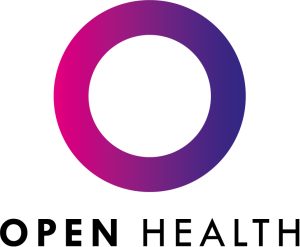NORD Rare Diseases Breakthrough Summit
October 13, 2020 |
Gavin Jones, Director of Rare Disease, provides his thoughts on last week’s NORD Breakthrough Summit and a collective need to reduce inequalities in rare disease
Entering A New Era – but what will this new era look like?
It was the NORD congress last week and I wanted to give some thoughts on a key theme that emerged across many sessions. As is seemingly the norm with virtual congress, I was juggling the day job and so this will not be a review of all the sessions. I was grateful that I was able to attend without the transatlantic travel and still have the opportunity watch back several breakout sessions that were missed. There are clearly some benefits to virtual congress!
As with others conferences this year there was plenty to be hopeful about – investment in research in more rare diseases; further progress in gene and therapies where monogenic rare diseases are a logical initial target; significant development in the use of telehealth and so reducing isolation and burden; all the continued passion and commitment within the rare disease community in driving forward change.
Through all this positivity there was a thread that is certainly and significantly holding back effective progress – DISPARITY. COVID-19 loomed large (more so than the European Congress of Rare Disease) and the pandemic has shone a bright light on disparity in the US in terms of healthcare inequalities and its disproportionate impact on certain populations and indeed rare diseases (as being investigated in other countries e.g. the work of ARDent).
A good example of where everything continually tracked back to disparity was a positive session on the role of telehealth to better treat patients living with rare disease. The pandemic has certainly accelerated its use and healthcare professionals described how this had transformed patient consultations with benefits for everyone. Physicians appreciated being able to see a child in their own home where they are more relaxed. Parents appreciated not having to drive five hours to attend a consultation and thereby reducing isolation. However, this won’t benefit the whole community unless, as Professor Susan Berryconcluded, access to good broadband is seen as ‘a right not a privilege’.
How do we overcome these multiple disparities impacting on better outcomes in rare disease? Durhane Wong–Reider led an excellent session on creating sustainable healthcare systems supporting rare disease across the Globe. There are factors, transcending regional borders, that threaten future access to innovation and increasing inequality of access including the removal of legislation that incentivises investment in rare disease research.
If we face similar challenges, perhaps we should fight with one voice? One perspective presented during this session was how the treatment of HIV has been ‘Globalised’ and what lessons can be learned from this. Looking also at how the world has been mobilised in protesting against the disregard of climate change and inequalities based on skin colour also demonstrates that strength in numbers can drive change. As a note, it was great to see another congress in quick succession (the other was the Rare Fair) tackle head on health inequalities based on gender, race and ethnicity with a break-out session well chaired by Eric Dube.
So, returning to the congress theme. Is there an opportunity to harness all the unwavering commitment to better outcomes in rare disease that resides in communities, countries and regions? Are we entering a new era of a Global voice towards collective positive change in rare disease.
Please contact me directly if you would like to discuss our rare experience or our capabilities.
This content was provided by OPEN Health
Company Details
Latest Content from OPEN Health
OPEN X Health launches to provide data-driven creativity to the pharmaceutical industry
OPEN X Health launches to provide data-driven creativity to the pharmaceutical industry
OPEN Health Appoints Steven Duryee as Chief Operating and Transformation Officer
OPEN Health Appoints Steven Duryee as Chief Operating and Transformation Officer
Unlock possibilities: A Medical Affairs strategy fit for the future
Explore the key areas to include in a Medical Affairs strategy and plan that is fit for the future in our latest whitepaper.
OPEN Health and Nested Knowledge announce strategic research collaboration to leverage AI technologies for evidence synthesis
OPEN Health and Nested Knowledge announce strategic research collaboration to leverage AI technologies for evidence synthesis
OPEN Health unites patient engagement experts to transform the patient experience
OPEN Health, a preeminent global provider of consulting, HEOR and market access, patient engagement, and scientific and creative communications services, is bringing together experts in strategic patient innovation and engagement,...
The right measurement frameworks matter for demonstrating treatment efficacy in clinical trials for Alzheimer’s Disease
The right measurement frameworks matter for demonstrating treatment efficacy in clinical trials for Alzheimer’s Disease
OPEN Health Presenting Innovative Research on Capitalizing Data for Patient Access at ISPOR Europe
OPEN Health Presenting Innovative Research on Capitalizing Data for Patient Access at ISPOR Europe
Dom Marchant, Chief Creative Officer, joins the executive leadership team at OPEN Health with a new vision to drive the creative communications practice
Dom Marchant, Chief Creative Officer, joins the executive leadership team at OPEN Health with a new vision to drive the creative communications practice
Embracing the Patient Voice Within Publications
This whitepaper will explore multidisciplinary perspectives on how we can better engage patient communities in publications to optimize the value of their contributions, while navigating any uncertainties and reluctance from...
Navigating the nocebo effect through patient engagement is the key to setting patients up for success
If you're interested in delving deeper into this topic and understanding how patient engagement can effectively navigate the nocebo effect, we invite you to explore our latest whitepaper.





